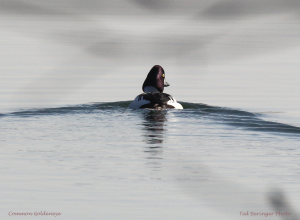By Todd Tanner
Hatch Magazine
We love to fish. We love it. Not in that juvenile, sloppy-wet-kiss way that so many of us remember from high school, but with an “I come alive with a fly rod in my hand” love that’s grounded in maturity, appreciation and respect for our angling traditions. We’ve been fishing for decades and there are very few other activities that bring us so much joy or help us connect to the natural world on such an elemental level.
Unfortunately, those of us who love to fish, and who see the necessity for protecting our landscapes and waterways, are coming under attack. It turns out – and no, we’re not making this up – that we are “radicals.” As Ty Hansen pointed out in a recent Hatch Magazine piece, the energy and resource extraction industries are targeting hunters and anglers. Those of us who support conservation are being portrayed as extremists and radicals.
So what is a radical? Seriously, what does it mean? Is protecting our favorite trout stream a radical act? What about defending an Alaskan salmon river from a mining company? Or how about passing on a healthy natural world to our kids and grandkids? Because those of us who want to share clean water, clean air and healthy landscapes with future generations are being ridiculed and marginalized. It’s almost as if our love for the great outdoors is standing in the way of “progress.”
Here’s something you should know. Most people don’t give a damn whether we hold on to our fishing. They don’t care if there are trout in our streams, or bass in our ponds, or bonefish cruising our saltwater flats. We live in a culture where growth, both physical and economic, trumps everything else; where no tradition, no heritage, no single aspect of American life is deemed so sacrosanct that it can’t, and shouldn’t, be tied down and sacrificed on the fetid, blood-specked altar of progress. It’s grow or die; it’s balls to the wall; it’s greed is good. Nobody – not the President, not Congress, not Wall Street – is willing to consider that unfettered, unexamined growth might not be the best path forward, or that we should steer the good ship America toward a more sustainable, more balanced future.
Sadly, if you agree with us you’re just another radical. You don’t want the Pebble Mine? You’re a radical. You don’t want corporate farms to dump pesticides and herbicides and fertilizers into our streams and rivers? You’re a radical. You don’t want suburban sprawl to trash the landscapes you loved when you were a kid? You’re a radical. You don’t want oil and gas rigs to despoil your favorite section of National Forest? You’re a radical. You want to keep our public lands in public hands? You, dear friend, are a dyed-in-the-wool, honest-to-goodness radical.
Oh, and you say you’re concerned about climate change? Well, not only are you a radical, but you’re a communist. You should go back to Mother Russia, comrade, and take all your commie friends with you.
And that, sadly, is what we’re up against – that kind of hostile, knee-jerk, reactionary crap, which paints sportsmen as radicals working to undermine everything good and decent and pure about America. Clean air is a luxury we can’t afford. Clean water is something we should get from the private sector – but only, of course, after we’ve paid for it. Public land should be sold off to stoke the engine of economic growth. Fishing … well, fishing is probably okay, as long as it doesn’t interfere with anything important, and as long as anglers don’t try to protect America’s natural resources from aggressive exploitation.
That’s the playbook. That’s the meme coming from our opponents. But you know what? It’s bullshit.
That’s right, we call bullshit. Because we aren’t radicals. And we’re getting tired of all these morally-bereft, intellectually-challenged, “greed is good” free market fundamentalists painting us as the exact opposite – the exact opposite – of what we really are.
We’re patriots. We love America. Our sporting roots run deep, and we were raised to appreciate our outdoor heritage. We want – and this is the crux of it; this is vital – to hold on to the things that make our country great; to share them with our families, and our friends, and with generations still to come. We want our kids to have access to the same incredible fishing we’ve enjoyed, and if we’re lucky enough to have grandkids, we want them to grow up in a country that still revels in the outdoors and that still shares in the sweet, ripe fruits of freedom. America is the best country in the world for anglers because we’ve fought, time and again, for clean water and clean air and healthy landscapes. We’ve fought to give our kids and grandkids a shot at a decent future. What could be more noble, or more honest, or more ethical?
The real radicals are the people who put profits above everything else; who can’t wait to carve muscle from bone as this great American experiment in self-governance slowly collapses under the weight of their greed and ignorance. The real radicals are the rapacious profiteers who hate public lands and public waters because our landscapes are protected, at least partially, from their insane “profit at all cost” mentality. They’re the folks who, without a second thought – hell, without an initial thought – are willing to sacrifice their children and grandchildren to the cannibalistic gods of free market fundamentalism.
Enough. We have literally had enough. We’re sick of liars and sociopaths pointing at us and yelling “Radicals!” We’re tired of hired guns sitting down at their keyboards and smearing good organizations like Trout Unlimited and Backcountry Hunters & Anglers and the Theodore Roosevelt Conservation Partnership. We refuse to sit silently on the sidelines while America-haters wear our flag – while they literally wrap themselves in Old Glory – to camouflage their true intentions.
So we have a message for all the haters who are attacking sportsmen. It’s a simple message, but it’s heartfelt.
We love America. We love our landscapes, and our sporting traditions, and our rich outdoors culture, and our fisheries, and we’re willing to fight for it; for all of it, for every last inch, for every river and stream and forest and meadow, for every kid who dreams of trout or salmon or bass or bluegills or tarpon. Greed will not triumph. Flat-earth idiocy will not reign supreme. Our fisheries will not fall prey to snake oil salesmen and crooked politicians. Not on our watch.
Signed,
Todd Tanner
Ted Williams
Tom Davis
Tim Romano
Mike Sepelak
Chris Hunt
Steve Zakur
Chad Shmukler



